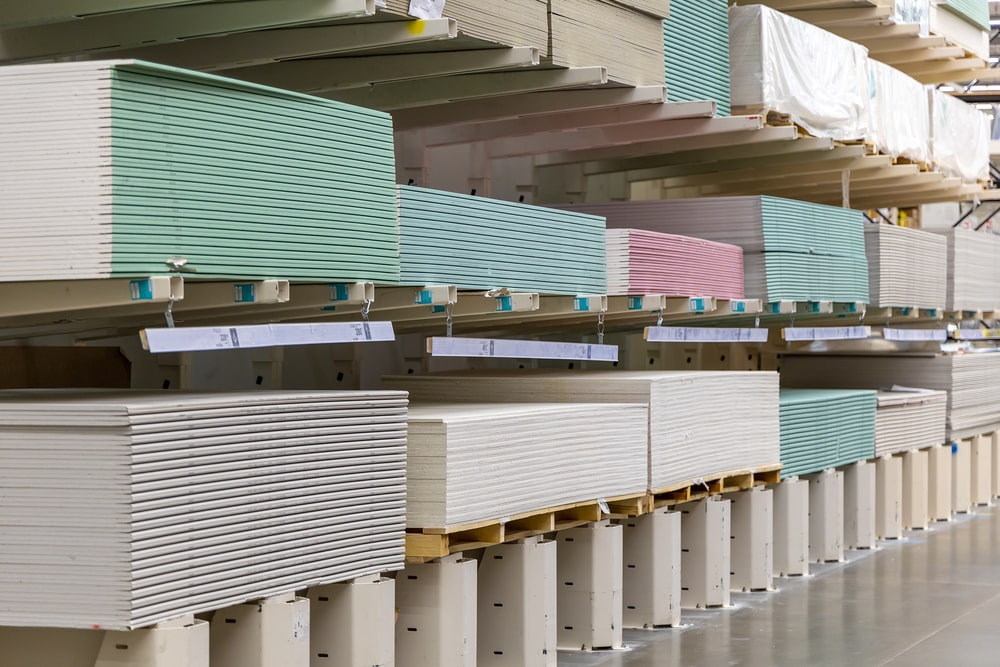
Patent of the month: breathable plasterboard for healthier buildings
UK Patent Number GB2591262
Plasterboard is one of the most extensively used materials in construction. Formed from gypsum-based material that is sandwiched between layers of paper, it is lightweight and easy to use, as well as benefiting from low flammability. It is also known for its acoustic qualities.
However, the sustained use of plasterboard is having a significant impact on the environment. This month’s patent relates to an alternative solution that alleviates some of the problems associated with the use of traditional plasterboard.
Processing gypsum mined from the environment is heat and energy intensive and releases harmful particulate matter into the atmosphere. Additionally, after more than 150 years of mining this limited resource, gypsum reserves are dwindling.
Gypsum can also be produced synthetically by trapping and converting sulphur dioxide emitted by coal-fired power plants in a process known as flue gas desulphurisation. However, given the drive away from fossil fuels, this solution is no longer considered sustainable.
Perhaps the main concern for the sector’s colossal use of plasterboard is how to deal with the material after it comes to the end of its useful life. Gypsum is a controlled waste stream, as it breaks down to produce toxic hydrogen sulfide when left in landfills in contact with biodegradable material.
The patented technology (GB2591262), developed by ADAPTAVATE Ltd, relates to an alternative plasterboard product which seeks to alleviate some of the problems associated with gypsum. The new building product is produced from a lignocellulosic bio-aggregate, using one or more of materials such as wheat, hemp and miscanthus, mixed with a calcium carbonate binder. A UK patent was recently granted for the technology, which is known as ‘breathaboard’.
The lignocellulosic bio-aggregate used to make the new product is composed of xylem cells which result in a strongly anisotropic, microcapillary structure. Once cured, the lignocellulosic bio-aggregate and calcium carbonate binder form a structure consisting of voids. These are connected by the microcapillary structure, which provides the necessary structural integrity whilst allowing air and water vapour to be absorbed and desorbed. This gives the product its enhanced breathability. In use, the product can help to regulate humidity within the building.
The breathable nature of the ‘breathaboard’ ensures that the risk of mould and condensation is significantly reduced. This creates a healthier environment for people using the building. In addition, it has also been found that the macroporous structure of the product is able to capture and lock in volatile carbon compounds from the atmosphere, which makes it a net zero carbon product.
Backed by entrepreneur Tom Robinson, ADAPTAVATE Ltd first started developing and testing an idea for a biocomposite building material in 2014. Since then, the company has continued to look for ways to improve its ‘breathaboard’ solution and has recently developed an alternative plant-based plaster wall finishing product too.
By focusing on intellectual property and protecting its innovations well before they are launched to the market, ADAPTAVATE Ltd has put itself in an excellent position for attracting investor interest. This could create opportunities to further develop their product lines and grow the business in the future. The company could also license its technologies to businesses operating in a range of markets globally.
Mark Sugden, senior associate and patent attorney in the Advanced Engineering group at European intellectual property firm, Withers & Rogers.
If you would like to read more stories like this, then please click here
